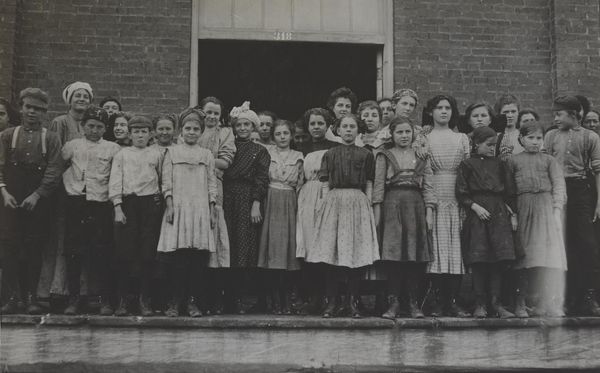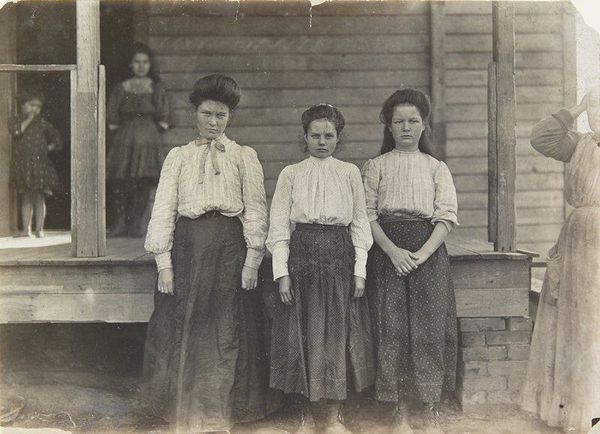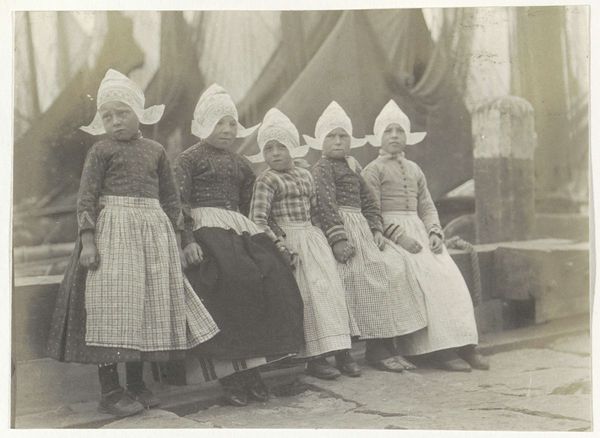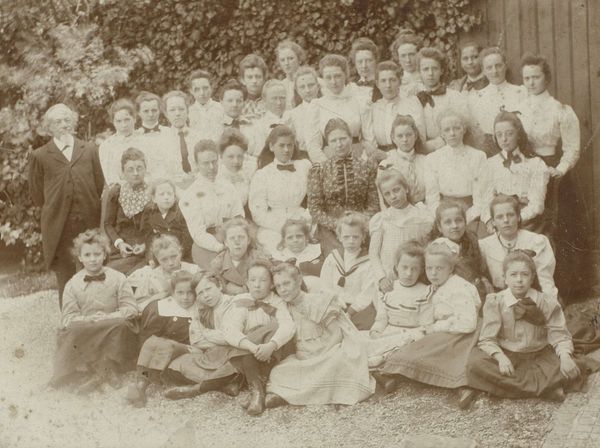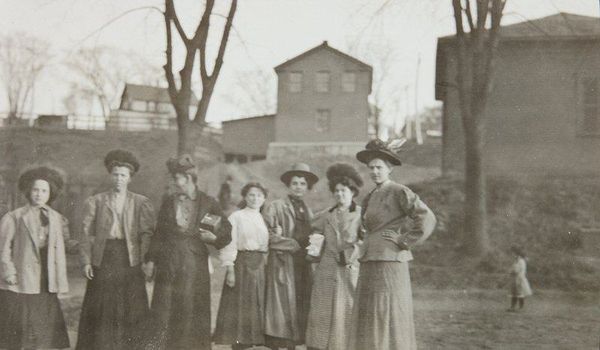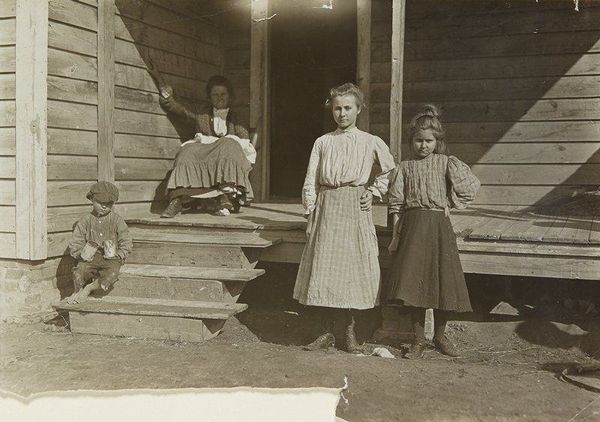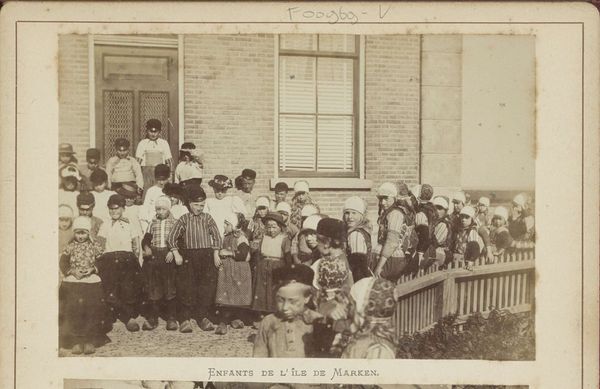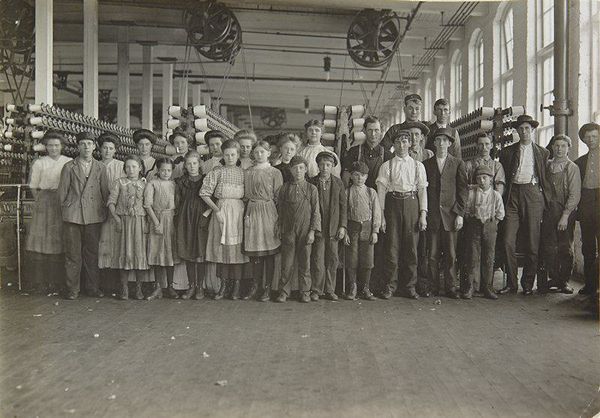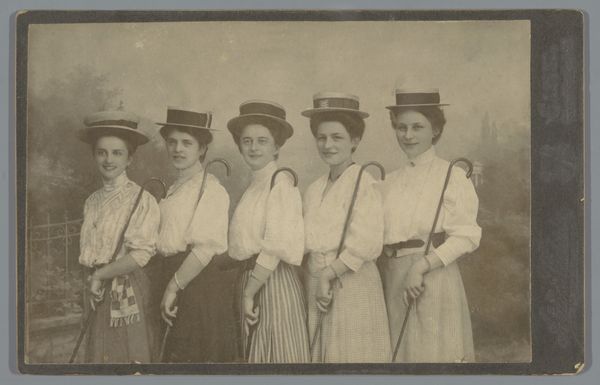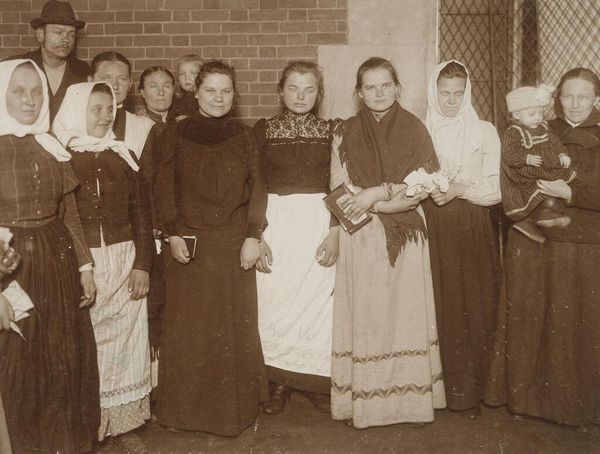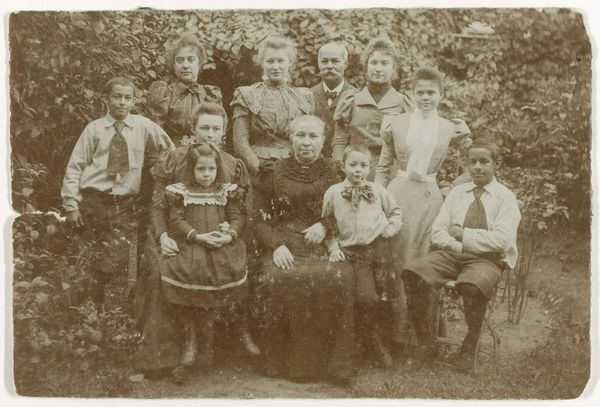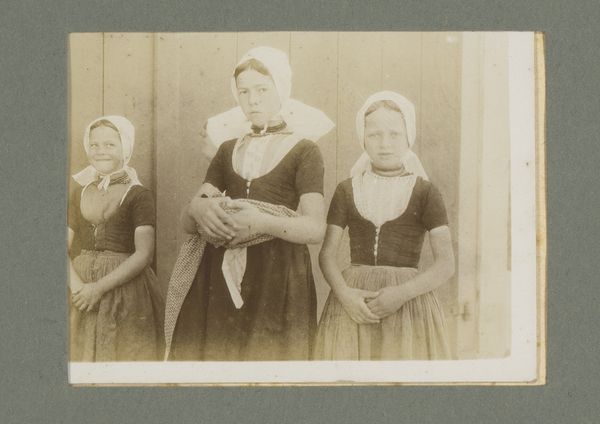
gelatin-silver-print, photography, gelatin-silver-print
#
portrait
#
17_20th-century
#
gelatin-silver-print
#
social-realism
#
photography
#
group-portraits
#
gelatin-silver-print
#
united-states
#
realism
Dimensions: 4 3/4 x 6 11/16 in. (12.07 x 16.99 cm) (image)4 15/16 x 7 in. (12.54 x 17.78 cm) (sheet)
Copyright: No Copyright - United States
Curator: This photograph, simply titled "Untitled," was taken in 1909 by Lewis Hine, a key figure in American social reform photography. It’s a gelatin silver print, currently held here at the Minneapolis Institute of Art. Editor: The immediate impression is one of weariness. Their eyes…they lack a certain spark. Even the very composition—the somewhat cluttered arrangement of figures—exudes a feeling of burdened constraint. Curator: Hine’s work, particularly this image, falls squarely within the realm of social realism. He used his camera as a tool for advocacy, exposing the harsh realities faced by marginalized communities. In this case, it's about the exploitation of child labor. Editor: I see it too in the very clothing. Those faded, repetitive patterns evoke uniforms or perhaps a shared lack of resources, and speak volumes about the suppression of individuality, almost as if the children's identities have been washed out with the relentless work. The presence of an older man standing behind them creates a clear hierarchy. Is he the owner or manager? Curator: Likely a supervisor. Hine often documented the conditions in factories and mills. Images like this were instrumental in galvanizing public opinion and ultimately contributing to the passage of child labor laws. Consider the poses they strike, how even physical contact with one another can look guarded, watchful. The image reads not merely as a photograph of children but also of social injustice. Editor: The photograph, in its muted tones and raw emotionality, speaks to a collective cultural memory, reminding us of a darker chapter in industrial history. They gaze at the camera like the symbol of exploited youth. Look how these figures echo traditional portraits, almost Madonna-like. They have halos of fatigue about them. Curator: Indeed, it forces us to confront uncomfortable truths about power, privilege, and the enduring struggle for human rights. What responsibility did the emerging technologies and systems of labor in the United States have to protect and provide safe circumstances for youth? What systems ultimately failed? Editor: It’s haunting how an image can carry so much symbolic weight and still manage to deeply affect us today, a visceral link to a not-so-distant past. I see the promise of their childhood stolen in each child's somber expression. Curator: It's a potent reminder that the fight for social justice is far from over, and the artwork is itself a memorial, ensuring these children's experiences and plight are not forgotten.
Comments
minneapolisinstituteofart about 2 years ago
⋮
Lewis Hine was a documentary photographer, educator, and social reformer. Trained in sociology, Hine taught at the progressive Ethical Culture School in New York City before turning his attention to photography. As a photographer for the National Child Labor Committee (NCLC), Hine traveled the United States to document children in unsafe working conditions in factories, mines, fields, and city streets. Over ten years, he created an indelible record of the human cost of an exploitative labor market, documenting the tired faces of children at the end of their shifts, or even children mutilated by industrial machinery. These disturbing photographs were used in publications and presentations created by Hine and the NCLC, and ultimately promoted sweeping policy changes designed to protect children.
Join the conversation
Join millions of artists and users on Artera today and experience the ultimate creative platform.
